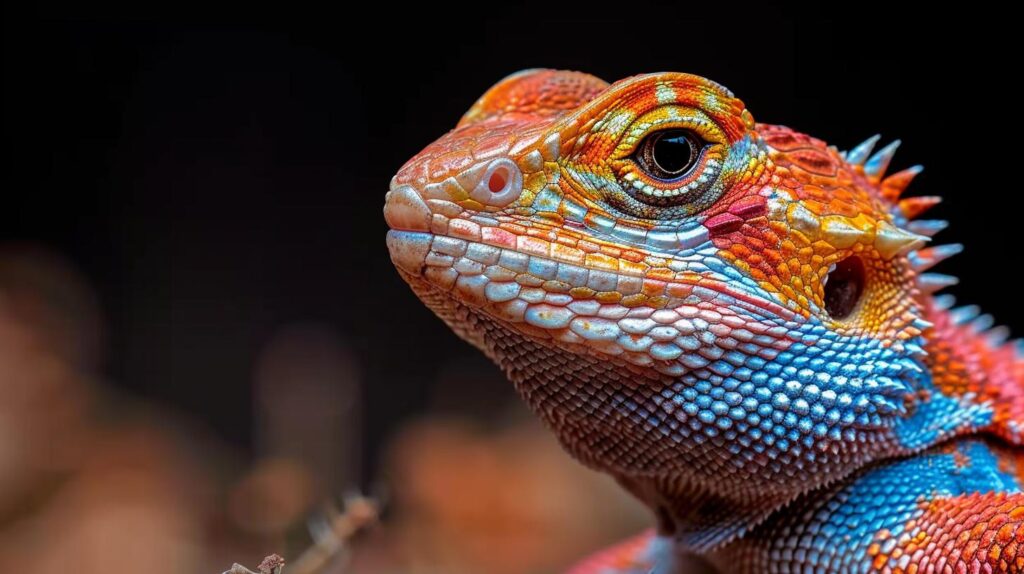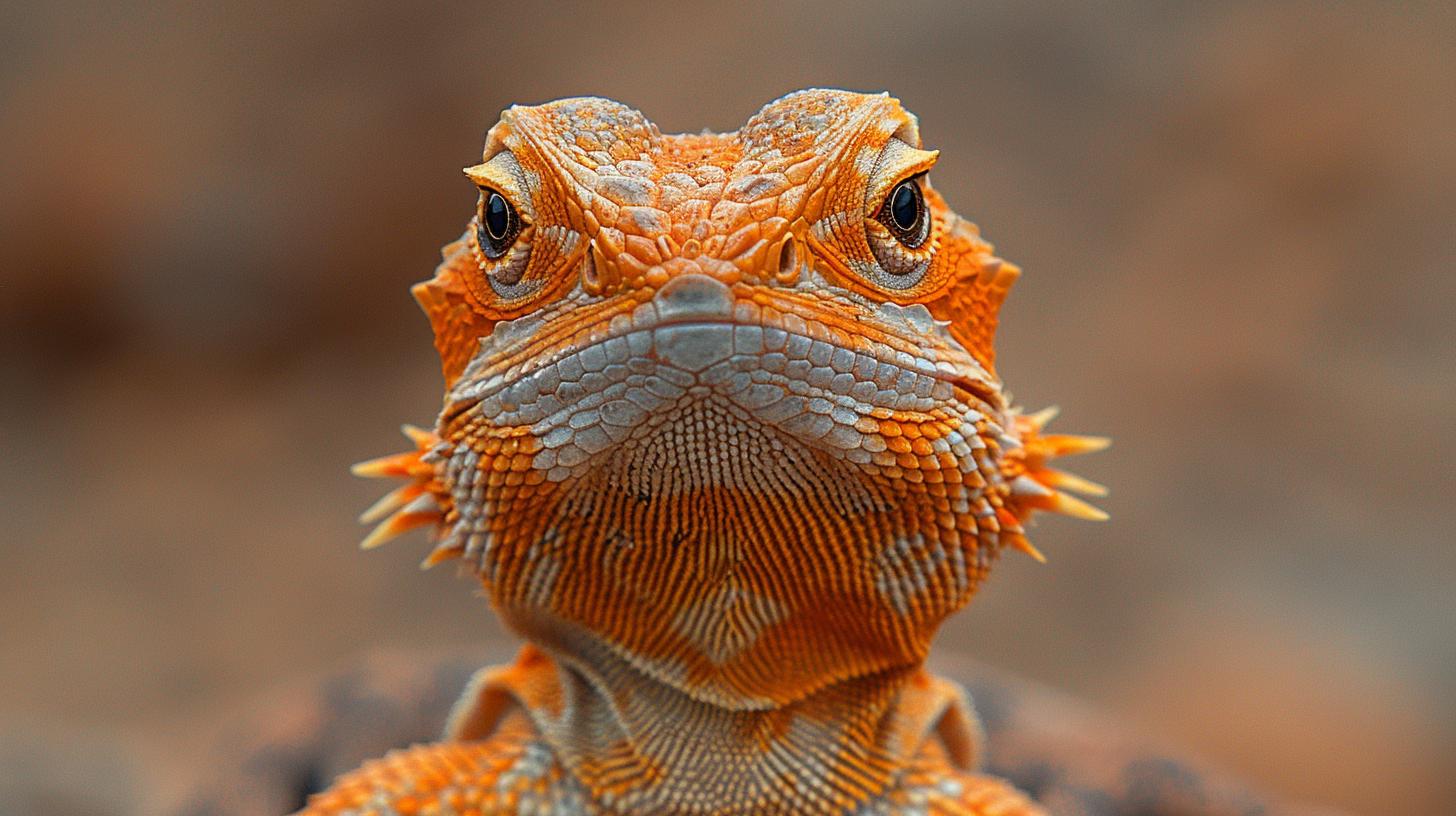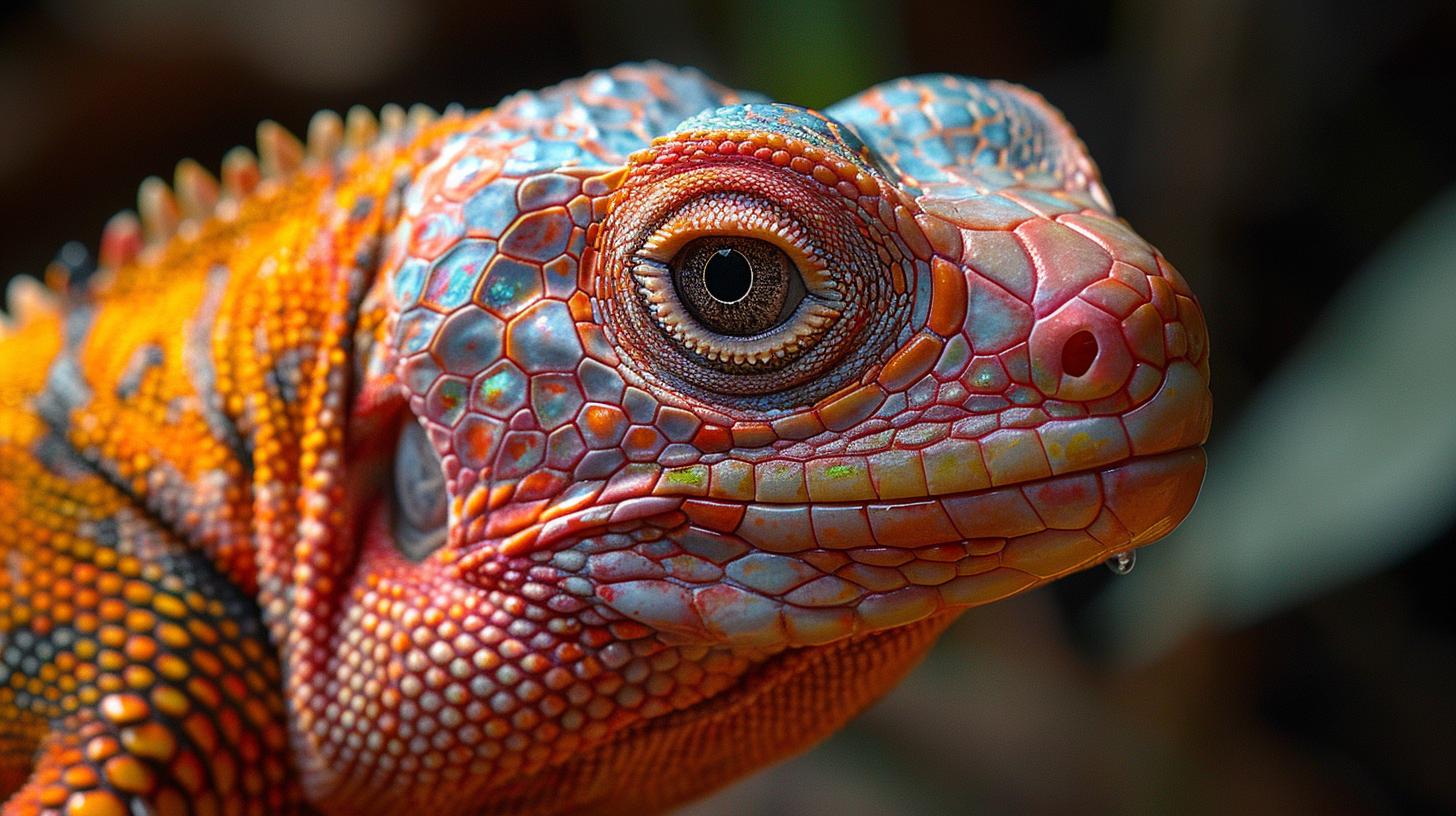Why Do Lizards Get Skin Infections?

- Introduction to Lizard Health and Hygiene
- Understanding Lizard Skin Structure
- Common Causes of Lizard Skin Infections
- Recognizing Symptoms of Skin Infections
- Preventative Measures for Healthy Lizard Skin
- Treatment Options for Lizard Skin Infections
- Insights Into Future Lizard Skincare and Research Trends
- Frequently Asked Questions
Introduction to Lizard Health and Hygiene
In the realm of reptile care, attention to lizard skin infections stands out as a pivotal aspect of ensuring their well-being and longevity. Lizards, with their distinct physiological features and environmental needs, require meticulous care to maintain optimal health.
The integrity of their skin plays a critical role in their overall hygiene and immunity, serving as the first line of defense against a myriad of infections. This introductory exploration into lizard health and hygiene sets a fundamental groundwork for understanding the significance of skin care in these fascinating creatures.
Diving deeper into the unique anatomy of lizards, their skin is not just an external covering but a complex organ equipped with specialized scales. These scales perform numerous vital functions including protection against physical injuries, prevention of water loss, and aid in thermoregulation.
However, this very uniqueness makes lizard skin susceptible to infections if proper care practices are not followed. Unveiling the intricacies of lizard skin structure, it becomes evident why maintaining its health is paramount for the survival and comfort of these reptiles.
Venturing further into the causes behind lizard skin infections, it's critical to recognize how factors such as unsuitable environmental conditions, inadequate husbandry practices, and exposure to harmful parasites or pathogens contribute significantly to these dermatological issues. Each factor underscores the need for informed and attentive care tailored to each species' specific requirements.
Jam-packed with insights on recognizing symptoms early on can dramatically improve outcomes for afflicted lizards through timely intervention. Hence, familiarizing oneself with common causes and typical signs forms an indispensable part of preemptive healthcare strategies aimed at minimizing incidences of skin infections in lizards.
Understanding Lizard Skin Structure
The skin of a lizard is not just its outward appearance or its protective barrier against the external environment; it's an intricate system vital for their survival. Unlike mammals, lizards have scales made from keratin that cover their bodies. These scales serve multiple functions, including moisture retention, which is critical given many lizards' habitats are arid and dry. This unique structure makes lizard skin infections a matter that requires specialized knowledge to address effectively.
One fascinating aspect of lizard skin is its role in thermoregulation. Lizards, being ectothermic organisms, rely on external heat sources to regulate their body temperature. Their skin, therefore, needs to be highly efficient at absorbing warmth when available while protecting the lizard from potential harm. This delicate balance puts their skin under continuous stress and can leave it vulnerable to infections if not properly cared for or if exposed to unsuitable environmental conditions.
When discussing the causes and prevention of *lizard skin infections*, understanding the specifics of lizard skin architecture becomes crucial. For instance:
- Scale Structure: The overlapping nature of scales provides protection but can also trap dirt or pathogens if not cleaned properly.
- Shedding Process: Lizards periodically shed their outer layer of skin to allow growth. Issues during this process can lead to infections if dead skin does not peel away as it should.
Through careful examination and maintenance of their habitat, one can minimize the risks associated with these structural vulnerabilities. Infections often present themselves when there is a breakdown in one or more aspects of this complex system-be it due to environmental factors, nutritional deficiencies, or inadequate hygiene practices.
By continuing our exploration into the causes and symptoms in subsequent sections, we will delve deeper into how each factor plays a role in the health of lizard skin and what measures can be taken to prevent such ailments from arising. This comprehensive approach not only ensures our scaly friends remain healthy but also enriches our understanding and appreciation of these fascinating creatures' biological intricacies.
Common Causes of Lizard Skin Infections
Environmental Factors Influencing Skin Health
Lizards, like all reptiles, are exothermic creatures that rely heavily on their environment to regulate body temperature and maintain overall health, including the health of their skin. A significant factor contributing to lizard skin infections is improper environmental conditions within their habitat.
Conditions such as excessive humidity or overly dry environments can severely affect a lizard's skin integrity, making it more susceptible to infections. Humidity levels that do not match a species-specific requirement can lead to skin dehydration or oversaturation, both of which impair the natural shedding process and can facilitate the growth of fungal or bacterial pathogens on the skin's surface.
Poor Husdbandry Practices
Beyond environmental conditions, poor husbandry practices play a pivotal role in the development of skin infections in lizards. Inadequate cleanliness of the enclosure can lead to the accumulation of waste products and promote the proliferation of harmful microorganisms that may infect lizards' skin.
Similarly, incorrect substrate choice can cause physical damage to the skin, leading to abrasions that become gateways for infection. Lizards require specific types of bedding and living conditions tailored to their natural habitats; when these are not provided or poorly managed, it increases stress levels and weakens their immune defenses against potential pathogens.
Parasitic and Pathogenic Culprits
Lastly, direct causes such as parasites and pathogenic organisms cannot be overlooked when discussing lizard skin infections External parasites like mites and ticks can cause irritations and lesions through their feeding activities which then become infected by secondary bacterial or fungal agents.
Furthermore, opportunistic bacteria and fungi naturally present in a lizard's environment may invade compromised skin barriers due inadvertently caused by external injuries or underlying health issues. Such infections not only compromise external appearances but can also penetrate deeper into tissues leading to more severe systemic conditions if left untreated.

Understanding these common causes highlights the importance of thorough care and observation by pet owners or caretakers in maintaining optimal health conditions for lizards preventing unpleasant circumstances associated with lizard skin infections. Balancing environmental factors, exercising diligent husbandry practices alongside wary observation for parasites and prompt response to pathogenic indications prove critical in safeguarding lizards from detrimental skin infections.
Recognizing Symptoms of Skin Infections
Lizard skin infections can often be subtle in their early stages, making it crucial for pet owners and enthusiasts to become well-versed in recognizing the signs. A healthy lizard's skin should be smooth, free of sores, and without any sign of flakiness or unusual shedding patterns.
Any deviation from this norm can be an initial clue that something isn't right with your reptilian friend's health. Identifying these symptoms promptly is vital as it allows for quicker intervention, potentially preventing more serious health complications down the line.
Understanding what constitutes normal shedding and behavior in lizards also plays a critical role in spotting issues early on. For instance, while it's typical for a lizard to shed its skin as it grows, excessive shedding or difficulty shedding-known as dysecdysis-can signal underlying skin infections or other health problems. Being observant of your lizard's regular habits will equip you with the knowledge to spot when something appears off.
Visible Signs of Lizard Skin Infections
Several visual indicators can suggest a lizard is dealing with a skin infection. Lesions or raw spots on the skin, particularly those that seem not to heal or worsen over time, are red flags.
Similarly, the presence of lizard skin infections may be indicated by visible patches of discoloration, bumps under the skin's surface, or swelling in specific areas. These symptoms may not only point to infection but could also hint at parasitic infestations which require immediate attention.
Behavioral Changes Indicating Discomfort
Aside from physical signs, behavioral changes in lizards can serve as significant indicators that they might be suffering from discomfort due to a potential infection. A normally active lizard becoming lethargic or showing decreased interest in food could be cause for concern. Furthermore, frequent rubbing against objects within their habitat might indicate an attempt to alleviate irritation on their skin-a possible symptom of an underlying issue needing investigation.
The Importance of Early Detection
Recognizing these symptoms early and accurately allows for timely treatment options that could considerably impact recovery outcomes for affected lizards. It emphasizes why caretakers should regularly monitor their pets' physical appearance and behavior closely and seek veterinary care if they suspect possible infections.
In summing up this segment on recognizing symptoms, pet owners' vigilance and prompt action upon discovering signs of distress play a central role in keeping our scaly companions healthy and content.
Preventative Measures for Healthy Lizard Skin
Preventing lizard skin infections is more beneficial and less stressful for both the lizard and the caretaker than treating an existing condition. The foundation of preventing these health issues begins with understanding and implementing proper care standards that promote a healthy environment for your reptile companion. Given their unique physiology, lizards require specific conditions to thrive, including suitable humidity levels, temperature gradients, and overall enclosure cleanliness.
Firstly, maintaining optimal environmental conditions in the lizard's habitat is essential. This involves:
- Ensuring proper humidity levels are met, as too low or too high humidity can contribute to skin problems.
- Establishing a temperature gradient within the enclosure to allow the lizard to regulate its body temperature naturally.
Similarly, hygiene plays a pivotal role in preventing skin infections. Regular cleaning of the enclosure to remove waste products and uneaten food prevents the build-up of bacteria and fungi that can lead to lizard skin infections. Additionally, substrates should be chosen carefully; some types may irritate the skin or harbor pathogens. Replacing substrate regularly and choosing materials that do not retain excessive moisture can significantly reduce infection risks.
Diet also directly impacts lizard health, including skin integrity. A balanced diet rich in essential nutrients helps strengthen the immune system, making lizards less susceptible to infections. It's critical to research and provide a diet suited specifically to your lizard's species needs.
Implementing these preventative measures requires regular commitment but ensures the wellness of your pet lizard. Not only do they help in keeping away skin infections but contribute broadly to the organism's long-term health and quality of life. These actions demonstrate responsible pet ownership while safeguarding against potential issues that may require more intensive treatments later on.
As this discourse on prevention unfolds, it becomes evident how intertwined are proper husbandry practices with disease prevention strategies in lizards' care protocols-providing clean living spaces, ensuring sound nutrition, managing stress by creating a conducive environment all converge on minimizing occurrences of lizard skin infections among other diseases.
The subsequent content will delve further into treatment options for those dealing with an infected reptile already demonstrating symptoms associated with common skin conditions-a necessary discussion complementing preventive perspectives shared thus far.
Treatment Options for Lizard Skin Infections
When addressing the treatment options for *lizard skin infections*, it's essential to understand that prompt and appropriate action can significantly impact the recovery process of these reptiles. The treatment approach often depends on the root cause of the infection, whether it's fungal, bacterial, or parasitic. Identifying the specific pathogen involved is crucial in determining the most effective treatment.

For minor infections, cleaning the affected area with a mild antiseptic solution before applying a topical antibiotic or antifungal cream may suffice. This simple step can prevent the spread of the infection and aid in quick recovery.
However, more severe cases might require systemic treatments such as oral antibiotics or antifungals prescribed by a veterinarian. It's also vital to adjust environmental factors that may have contributed to the condition-this could involve improving enclosure hygiene, adjusting humidity levels, or modifying dietary inputs to boost the lizard's immune system.
| Treatment Type | Description |
|---|---|
| Topical Treatments | Application of antibiotic or antifungal creams directly on infected areas. |
| Systemic Treatments | Oral medications prescribed by a veterinarian to address more profound infections internally. |
| Environmental Adjustments | Changes made within the living space of lizards to eliminate harmful factors contributing to skin infections. |
Beyond immediate treatment actions, ongoing monitoring is necessary to ensure that *lizard skin infections* do not recur. Keeping a close eye on any returning signs while maintaining an environment conducive to good health is part of long-term care strategies. Further research into reptile dermatology continues to offer new insights into more effective treatment methods and preventative measures. This evolving knowledge base aids pet owners and veterinarians alike in providing optimal care for these fascinating creatures.
The journey toward healing a lizard from skin diseases does not end with medication alone but includes leveraging an understanding of all contributing factors-biological and environmental-to prevent future occurrences. As we continue exploring this topic, insights from recent studies and advances in veterinary practices will guide us toward better preventative measures tailored specifically for lizards' unique biological needs.
Insights Into Future Lizard Skincare and Research Trends
As we reflect on the wealth of information shared in "Why Do Lizards Get Skin Infections? ", it's clear that maintaining the health and hygiene of our scaly friends is more than just a routine; it is essential for their well-being.
The unique structure of lizard skin, while fascinating, also makes them susceptible to various infections if not cared for properly. Our journey through understanding these susceptibilities to recognizing symptoms and learning about preventative measures underscores the importance of meticulous care in preventing lizard skin infections.
The combination of environmental management, proper diet, and regular veterinary checks cannot be overstated as foundational elements in preserving the health of lizards. However, as we look towards the future with optimism, advancements in veterinary medicine and husbandry practices invite us to envision a world where lizard skin infections become increasingly rare. Encouraging ongoing education and research efforts promise not only better care for our reptilian companions but also foster a deeper understanding and connection between lizards and their keepers.
For those intrigued by the complexities of lizard health or seeking further enlightenment on how best to care for these remarkable creatures, our website offers an extensive library that covers a broad spectrum of topics related to reptile maintenance, disease prevention, and welfare. We invite you to continue your quest for knowledge with us - whether it's gaining insights into exotic pet care or simply satisfying a curiosity about the animal kingdom.
Discover more articles filled with valuable information ready to guide you on your journey toward becoming an exemplary caretaker for your scaled companions.
Frequently Asked Questions
What Diseases Do Lizards Carry to Humans?
Lizards can carry a variety of diseases to humans, the most common being Salmonella. This bacteria typically spreads through direct or indirect contact with the reptile or its living environment, leading to symptoms like diarrhea, fever, and abdominal cramps in humans. Additionally, lizards may harbor parasites that could potentially infect humans if proper hygiene practices are not followed.
How Do You Treat an Infected Reptile?
Treating an infected reptile starts with a visit to a veterinarian experienced in reptile care to accurately diagnose and recommend treatment. The treatment may include antibiotics for bacterial infections or antifungal medication for fungal infections. Supportive care such as ensuring a clean habitat, optimal temperature and humidity levels, and proper nutrition is also crucial for the reptile's recovery.
How Do You Treat a Lizard Wound?
To treat a lizard wound, first gently clean the area with lukewarm water and mild antiseptic soap to remove any dirt or debris. Applying a thin layer of antibiotic ointment can help prevent infection.
If the wound is deep or does not heal within a few days, seek veterinary assistance as stitches may be required and other treatments to prevent infection and promote healing.
Can Reptiles Give You a Rash?
Yes, handling reptiles can sometimes lead to skin rashes in humans. These rashes are often the result of allergies to the reptile's skin proteins or from bacteria carried by the animal which causes skin irritation upon contact. Wearing gloves when handling pets and washing hands thoroughly afterward can reduce this risk substantially.
Do Backyard Lizards Carry Diseases?
Backyard lizards can indeed carry diseases harmful to humans, including Salmonella and parasitic worms that could potentially cause illness if transmitted. However, transmission typically requires direct contact with these animals or their feces; hence practicing good hygiene and supervising children around backyard lizards minimizes these risks.
Can You Get an Infection From a Lizard?
It's possible to get an infection from a lizard through bites or scratches which introduce bacteria into wounds or through indirect contact leading to bacterial infections like Salmonella. Ensuring all interactions with lizards are gentle and hygienic practices such as washing hands after handling them greatly reduces the chances of infection.
Leave a Reply
You must be logged in to post a comment.